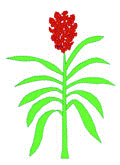International Sorghum and Millet Collaborative Research Support Program (INTSORMIL CRSP)
Date of this Version
12-2010
Document Type
Presentation
Citation
Presented at the Sorghum Food Enterprise and Technology Development in Southern Africa Workshop, in Lusaka, Zambia, December 6-9, 2010.
Abstract
Problem: Sorghum and millet productivity, production and consumption have been stagnant or declining for 20 years.
Challenge: How to increase the productivity and incomes of sorghum and millet farmers to improve food security and accelerate economic growth.
Solution: Better technology and linking producers to markets are important parts of the solution to the problem.
Objectives
Examine the effects of new production and marketing technology on sorghum and millet producers’ income and productivity in Tanzania and Zambia.
Identify better technologies, enhance market linkages between producers and buyers, improve quality and diversify utilization to ensure food security and increase farm income.
Conclusions: Value Chain
Processors are a most important anchor in the value chain.
Processors need regular supplies of grain for processing; they can provide stability to the market.
Processors can be an assured market for smallholder crops.
Major problems in supplying sorghum and millet to commercial channels are small holder access to these markets, small amounts for sale, erratic supply, & quality problems.
Processors can be change agents to improve value chain performance.
Need to build trust & improve communication among actors in value chain.
Value chain needs a level playing field that rewards all members.
Contracting may be a means to reduce processor risks of price, adequate supplies, quality and reliability.
Farmer associations, NGO’s and others may be a way to increase smallholder access to markets & reduce assembly costs.
Included in
Agricultural Economics Commons, Agronomy and Crop Sciences Commons, Food Processing Commons



Comments
Copyright 2010, the authors. Used by permission.